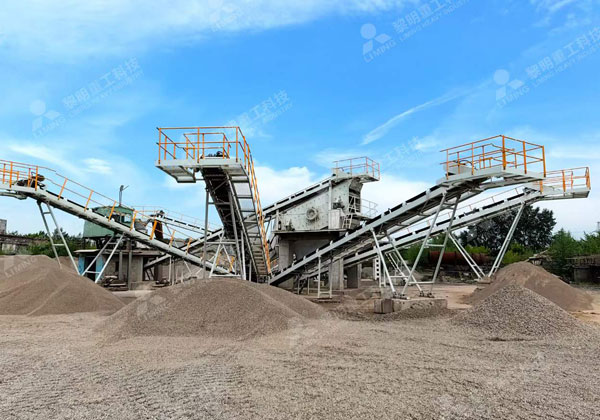Vibrating screens are crucial in the aggregate industry for separating materials based on size. These screens use vibration to move material across the screen’s surface, allowing smaller particles to pass through while retaining larger ones. This process is essential for producing uniform, high-quality aggregate products.
Working Principle
The vibrating screen operates on the principle of vibration, which is generated by an unbalanced flywheel. The vibration causes the material to move in a controlled, rhythmic pattern across the screen’s surface. As the material moves, it encounters various screen media that separate it based on size. Smaller particles fall through the openings in the screen, while larger ones are conveyed to the discharge end.

Design and Components
A typical vibrating screen consists of several key components:
- Screen Box: The main structure that holds the screen media.
- Screen Media: The surface where the separation occurs, which can be made from various materials like woven wire mesh, polyurethane, or rubber.
- Vibration Mechanism: Usually consists of a motor and an unbalanced weight or an eccentric shaft that generates the vibrating motion.
- Springs: These support the screen box and absorb the vibrations, ensuring smooth operation.
- Motor: Powers the vibration mechanism.
Types of Vibrating Screens
- Inclined Vibrating Screens: These are the most commonly used screens in the aggregate industry. They are set at an angle and rely on gravity to assist in the movement of material.
- Horizontal Vibrating Screens: These screens operate at a flatter angle and are used when a high degree of separation is required.
- Multi-Deck Screens: These have multiple layers of screen media, each with different sized openings, allowing for simultaneous separation into multiple grades.
Applications
Vibrating screens are used in various stages of aggregate production:
- Primary Screening: After the initial crushing stage, to remove large particles and prepare material for further processing.
- Secondary Screening: To classify materials into specific size ranges after secondary crushing.
- Final Screening: To produce the finished product sizes for different applications such as concrete, asphalt, or road base.
Advantages
- Efficiency: Vibrating screens can process a large volume of material quickly and efficiently, which is crucial in high-production environments.
- Versatility: They can handle a wide range of materials, from fine sand to large rocks.
- Low Maintenance: With proper design and regular maintenance, vibrating screens are durable and require minimal downtime.
- High Accuracy: The ability to use different types of screen media allows for precise separation and classification.
Challenges
- Wear and Tear: Continuous vibration can lead to wear and tear on screen media and other components, necessitating regular maintenance and replacement.
- Noise and Vibration: Vibrating screens can be noisy and cause vibration in surrounding structures, requiring adequate measures to mitigate these effects.
- Clogging: Fine materials can sometimes clog the screen openings, reducing efficiency. This requires periodic cleaning or the use of anti-clogging devices.
Vibrating screens are essential for aggregate screening, providing efficient separation and classification of materials. Their versatility, efficiency, and relatively low maintenance make them a critical component in the aggregate production process. Despite some challenges such as wear and noise, the benefits they offer in terms of production efficiency and product quality are significant. Proper selection, design, and maintenance of vibrating screens can greatly enhance the overall productivity and profitability of aggregate operations.

